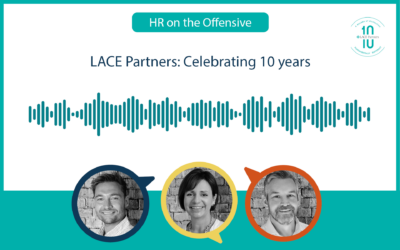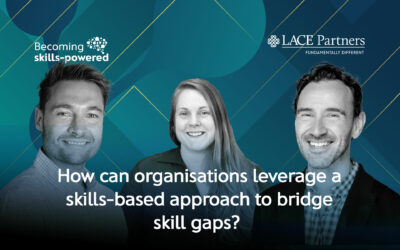Joined by Nelson Sivalingam, CEO of How Now, this week’s blog summarises themes discussed on one of our latest HR on the Offensive podcast. As many organisations have adapted to working through the pandemic the requirements from employees have changed. We explore; re-skilling employees, the need for digital learning platforms and how HR/L&D teams can identify the key problems they are trying to solve to inform decision making.
What do you see as some of the biggest opportunities for L&D and talent leaders right now?
Learning, digital learning and the broader conversation about upskilling and reskilling has landed right in the middle of the business agenda. On a practical level there are many companies which were 100% dependent on classroom training to delivery their L&D offering; and overnight 100% of that training is gone. They had to figure out a way around this, and some companies were quicker to move than others.
Some organisations thought they would likely be back in the office after the first lockdown but then realised they needed a longer-term sustainable view on how they could support learning for a distributed workforce. This opened up a lot of opportunities not only in the workplace but in the wider Ed Tech market as universities, schools and organisations have all had to look into technology which will enable people, no matter where they are based.
The narrative around upskilling and reskilling is now being owned by business leaders where they are questioning whether their teams have the skills that they need. There are also questions in relation to our rising unemployment levels; do these people who are unemployed have the skills to get another job? What does offboarding look like and how do we reskill this population to get them into new roles?
Over the last year some businesses have been seen to be more caring towards their employees. On the topic of offboarding, have you seen a rise in businesses helping to retrain their employees as they exit the business?
Yes, I absolutely think it’s happening more. Most organisations of a mid-market/enterprise level are doing effective offboarding campaigns. If you’d asked me this question five years ago I would have told you that we rarely come across offboarding except in the case of large enterprises. However, it contributes to the wider employer brand and the alumni network of an organisation are a good pool of people to be using for referral recruitment – so it pays dividends to support people through their offboarding period.
Do you think skills have come to the forefront of leaders’ minds solely because of what has happened over the last year or is it that the businesses are starting to see tangible return in investment from skills?
A common challenge for L&D is the perception that they are a cost centre. At the very least they should be a value centre – but if done well they should be a profit centre. When trying to shift that attitude, it’s about asking if HR and L&D are communicating the value of what they are doing and whether they are measuring the correct impact metrics to demonstrate it.
Typically the baseline of what L&D teams report on is compliance. However, if you can say that by running a learning programme you have helped 70% of the workplace increase their skills proficiency by two levels, you will have a level of granularity most teams don’t have.
Even pre-Covid the government was pumping money into trying to solve our skills crisis. In comparison to the UK, countries like Singapore have a brilliant skills future model where they subsidise learning to invest in business-critical skills. We had a slow process, but it has really picked up momentum through the pandemic.
What would your advice be to Talent Directors or Learning Directors so that they make the right decision for them in terms of digital solutions?
Start with the problem. Too often this doesn’t happen. By starting with ‘I need an LMS or HRS’ then you are doing it wrong. We encourage our clients to be the expert in the problem rather than thinking about the solution. Think about the problems you might be facing, that can’t be solved by a typical LMS:
- Do you know which skills you already have or don’t have in your organisation?
- Do you have a way for people within your organisation to connect with your content to learn the skills they need?
- Are you able to connect people with relevant content at the time when they need it most.
Once you have identified the problems you want to face you can find the right solution for you.
Food for thought? If you have any questions or thoughts on this week’s blog, feel free to reach out to our in-house learning expert Emma Leonis.






